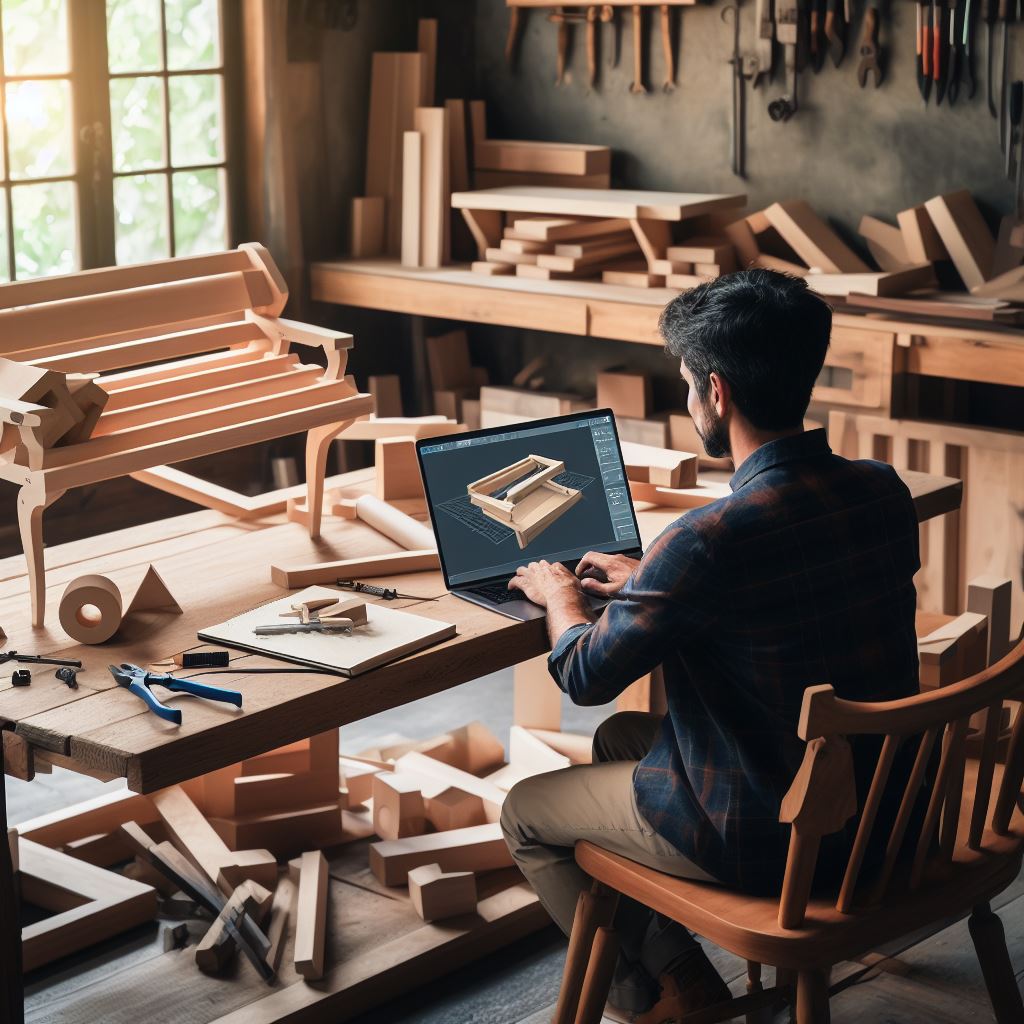
Woodworking Projects for All Skill Levels
Woodworking is a rewarding and relaxing hobby that allows you to create beautiful, functional items for your home. With the right plans and tools, woodworking projects can be completed by woodworkers of all skill levels. This article explores beginner, intermediate, and advanced woodworking projects, providing examples and tips to help you find your next great woodworking challenge!
| Key Takeaways |
|---|
| Start with simple beginner projects like birdhouses and cutting boards to develop core woodworking skills. |
| Build on beginner skills with intermediate projects like benches, bookcases, and coffee tables. |
| Master complex joinery, turning, bending, and inlay with advanced projects like carved signs and segmented bowls. |
| Choose projects that align with your current skill level and interests. |
| Be sure to use appropriate wood and finishes based on the project type and use. |
| Patience and quality tools are key to woodworking success at any skill level. |
Getting Started with Beginner Woodworking Projects
Just starting out in woodworking? The key is to begin with simple projects that help you develop core skills like measuring, cutting, assembling, and finishing. As a beginner, it’s smart to start with woodworking projects that require only basic tools and common lumber sizes to limit costs. Here are some great starter woodworking projects:
Birdhouse
Birdhouses make for straightforward beginner projects that allow you to practice basic skills. They’re also functional items that can be placed around your yard to attract birds once completed. Opt for a simple birdhouse shape and make sure to use weather-resistant exterior wood.
Cutting Board
Cutting boards are beginner-friendly and provide plenty of cutting and sanding practice. Choose a wood like maple, cherry, or walnut. Glue boards together based on the desired size and shape before cutting and sanding. Finish with food-safe mineral oil.
Planter Box
Simple rectangular planter boxes are beginner-friendly and great for gardening. Use cedar or redwood boards and assemble with basic butt joints secured with exterior wood glue and nails. Paint or stain the finished planter before filling with soil and plants.
Picture Frame
Crafting a simple picture frame allows for practice measuring and cutting miters. Pick molding for the frame material and cut miters for a clean corner fit. Add a rabbet cut on the back to support the picture. Stain or paint prior to inserting picture and hanging.
Intermediate Woodworking Projects to Build Skills
Looking to advance your skills? Intermediate woodworking projects incorporate more complex joints, specialized tools, and refined techniques. These projects build upon beginner skills to take your woodworking abilities to the next level.
Outdoor Bench
An outdoor bench is an intermediate project that incorporates mortise and tenon joinery. Use a weather-resistant wood like cedar. Carefully measure and cut mortises, then shape tenons to fit. Glue and clamp the joints securely before adding slats.
Bookcase
Bookcases are useful intermediate projects that allow for practice with dados, rabbets, and face frames. Cut shelving boards, dado side panels, and construct the cabinet. Add face frame, doors, and top before sanding, staining, and sealing.
Rolling Coffee Table
A rolling coffee table is a functional intermediate project. The base requires precise lap joints secured with glue and pegs. Add the tabletop, wheels, and finish. Use rich wood like walnut to create an attractive end product.
Cutting Board with Inlay
An intermediate inlaid cutting board takes skills up a notch. Carefully cut two types of wood for the checkerboard inlay pattern. Glue in sections and clamp before final shaping and sanding. Finish by sealing with mineral oil and beeswax.
Advanced Woodworking Projects to Master Complex Techniques
Once your intermediate skills are solid, try advancing to more complex woodworking projects that allow you to master techniques like joinery, turning, carving, bending, and inlay work. Quality hand tools and patience are key for advanced success.
Curved Leg Table
Steam bending is required to shape the curved table legs, an advanced technique. Carefully prepare a form and steam the wood before bending and clamping to set the curve. Build an apron and attach the shaped legs.
Cabinet with Drawers
Cabinetry requires mastery of framing, doors, drawers, and finish details. Cut dadoes for shelf pin supports and rabbets to recess cabinet backs. Build drawers with dovetail joinery. Add raised panel doors.
Segmented Woodturning Bowl
Segmented turning combines precise joinery with lathe skills. Cut and glue wooden segments before turning the block into a bowl shape. Refine the form and smooth the surfaces through sanding and finishing on the lathe.
Carved Sign with Inlay
Design and carve a custom sign from a wood slab. Carver lettering and shapes using gouges and chisels. Add color with wood inlay to create contrast. Finish with sealers suitable for outdoor use before hanging.
With this range of beginner to advanced project ideas and tips, you’re ready to start creating beautiful wood projects at your skill level! Allow your abilities to progress as you learn by doing and have fun with this rewarding hobby.

